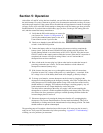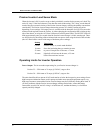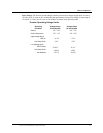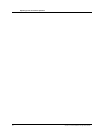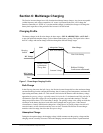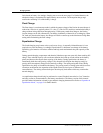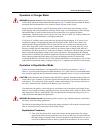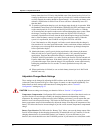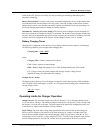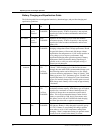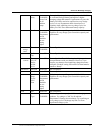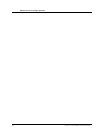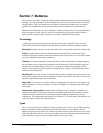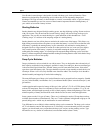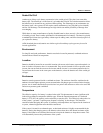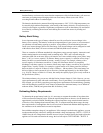
Prosine 2.5/3.0 Installation & Operation Guide 63
Section 6: Multistage Charging
switch to the GEL position even if they use starved-electrolyte technology rather than gelled
electrolyte technology.
Battery Size Selection: Given the wide variety of potential installations, the size of the battery bank
used with the Prosine inverter/charger will vary greatly. Four DIP switches on the Prosine inverter/
charger chassis can be set to indicate your battery capacity and allow the Prosine inverter/charger to
deliver the charging requirements to match your battery capacity.
Maximum AC Current (AC service setting): The Prosine inverter/charger has been designed so it
does not overload the AC breaker to which it is connected. The Prosine inverter/charger measures the
current it draws from the breaker and reduces charge current to prevent breaker overloading. Two DIP
switches need to be configured on the Prosine inverter/charger to match your AC breaker.
Battery Charging Times
Charging time will depend on the capacity of your battery bank and on how deeply it is discharged.
The following equation gives an approximate charging time:
Charging time = CAP x DOD
CC x 80
where:
Charging Time = Battery recharge time in hours
CAP = Battery capacity in ampere-hours
DOD = Battery depth of discharge in % (A fully discharged battery has 100% DOD)
CC = Charge current, the current output of the charger in amps. (charge current
depends on battery size and breaker size settings)
Example for 12V model:
The battery bank is made up of two 8D Group size batteries with a rated capacity of 200 amp/hours
each. The bank is 80% discharged (i.e. DOD = 80). The approximate charging time with the Prosine
inverter/charger will be:
400 x 80
=4 hours
100 x 80
Operating Limits for Charger Operation
Output Current: The maximum output current for the Prosine 2.5/12 is 100 amps and the Prosine
3.0/12 can deliver 120 amps. The maximum output current for the 24V Prosine 2.5/24 is 50 amps and
the Prosine 3.0/24 can deliver 60 amps. The total output can be reduced by changing the battery size
or maximum AC input current (breaker) selection switches.
Input Voltage: The wide input voltage range specification allows the Prosine inverter/charger to
deliver a precise charge to your batteries even when incoming AC voltage is less than ideal. The
Prosine inverter/charger maintains the correct charging voltage for your battery when the AC line
voltage drops as low as 90VAC, or rises as high as 135VAC. A built in surge protector in the Prosine
inverter/charger protects it, and your DC circuits, from surges and spikes on the AC power line.



